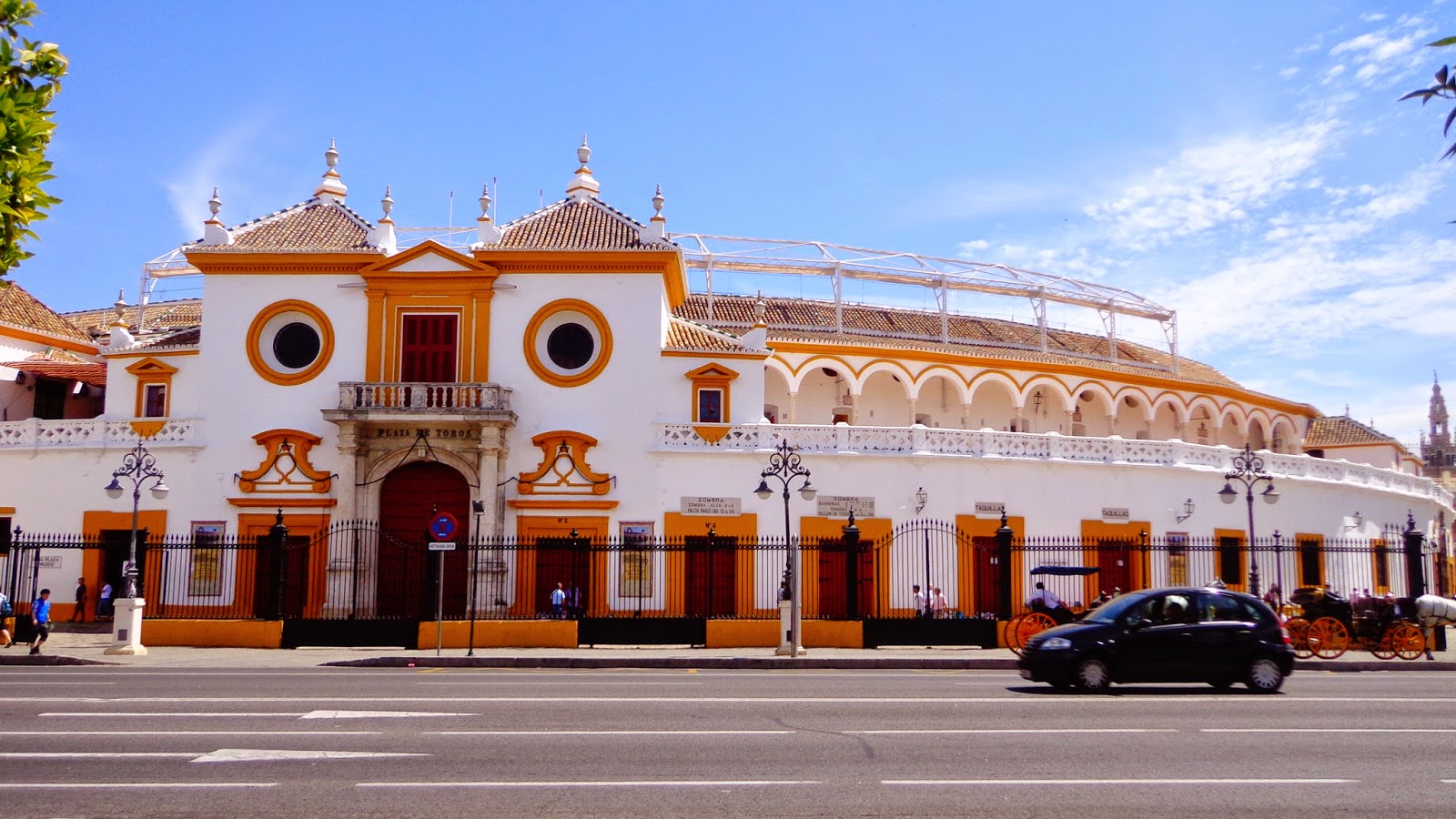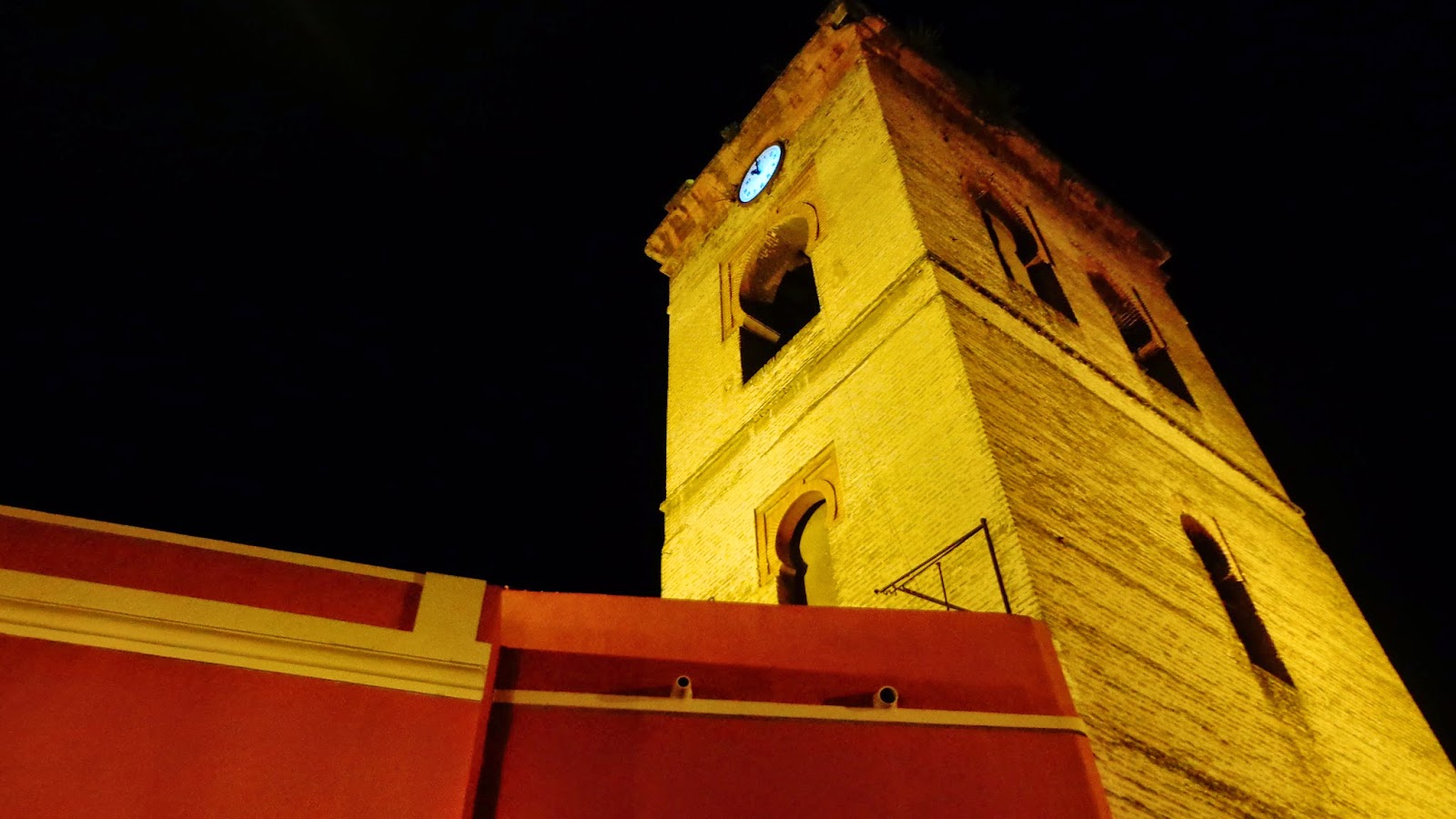The Spanish Travelogue chronicles my journey through the explored and unexplored regions of the Spanish mainland (and the unexplored corners of the explored regions).
If you have ever wanted to go to Spain to see colours, to walk around the streets and bask in the sunshine, to witness bullfighting, to watch a flamenco dance or to do the Tango, you've probably been inspired by Sevilla.
To start with the basics, the pronunciation is Seviya. Sevilla, or Seville, is the largest city in the autonomous province of Andalucia. But unlike its Andalucian counterpart Granada, Sevilla retains more of a Spanish flavour in a confluence of Spanish and Arabic cultures.
Unlike the unpredictable weather in The Basque Region, Sevilla's climate is more stable. You won't be hindered in your expedition by that sudden incessant rain, and you can have your shades on. Whatever there is to see in Sevilla can be covered in a day by walking around the city.
It is a good idea to make the most famous meeting point in Sevilla your starting point - the twin structures of the Cathedral and the Giralda. The Cathedral of St. Mary was built after the Reconquista, the re-conquering by the Christian kings of the Al-Andalus region from the Moors. The Sevilla Cathedral is the largest Gothic cathedral in the world. The Cathedral stands on what was the former site of the city's mosque, and was built over a hundred years after the Reconquista. It is a World Heritage Site today.
 |
| The Sevilla Cathedral is the largest Gothic Cathedral in the world. |
I must say that I did not find the interiors of the Cathedral having any awe-inspiring ability, unlike that of the Notre Dame in Paris. Perhaps the only attraction was the catafalque of Christopher Columbus.
 |
| The Catafalque of Christopher Columbus inside the Sevilla Cathedral |
I suggest you walk on, to what I think is the more picturesque attraction - La Giralda, the bell tower of the Sevilla Cathedral.
 |
| La Giralda - The most important landmark of the city |
The entrance to La Giralda is from inside the Sevilla Cathedral. La Giralda is a much older structure, and was built during the Moorish period as a minaret. After the Reconquista, the city's mosque was converted into a church, and the bell tower is therefore an instance of an architectural blend of the two styles.
As you take the winding path leading to the top of the Giralda, you come across various drawings and instruments from that period which have been preserved in the bell tower. Keep a watch for them as you climb along.
 |
| The view of the Sevilla Cathedral as you walk up the Giralda Tower |
Before coming to Sevilla, I had seen photos of the city and there was one photograph that was a recurrent. It was of an aerial view of a square, a view of a clear sky and of houses with bright colours splattered across the city. While climbing up the Giralda tower, I saw the photograph come alive in front of my eyes. It was this.
Walk on from the square of the Cathedral towards the riverside. You will reach the bridge of Isabel II, known more popularly as the Triana bridge or Puente de Triana. This is because on the other side of the river is the neighbourhood of Triana. The bridge, hanging over the Guadalquivir river, separates the main city of Sevilla from the neighbourhood of Triana, and both sides maintain their distinctiveness in character even to this day I'm told.
 |
| Puente de Triana |
Keep walking along the river bank on the city's side, and you will see Plaza de Toros to your left. Plaza de Toros is the location of the bullfighting museum, and is open only on days when such fights take place. I wasn't lucky enough to venture inside. I am told that traditionally, the king would appear at the entrance and signal for the game to begin, and only then would the gates be opened. Sevilla has such tales in every nook and corner; you only have to keep your ears out for them. We will move on to another.
 |
| Entrance of the Plaza de Toros - Bulls fight within. |
Walking further on, you reach the Torre del Oro, which translated to English means 'Gold Tower'. It served as a watchtower for the Almohad dynasty, and a prison during the middle ages. It was used by King Pedro I to hide his treasures of gold and silver, and a woman he loved - Aldonza Coronel. Folklore has it that the enchanted king had imprisoned the woman whose love he could never get. Apparently she poured burning oil over herself in protest. Sevillian stories float about like the breeze, and there is no way to test their veracity. They are however as colourful as the houses.
 |
| Torre del Oro |
You can revisit the riverside in the evening, since the dance performances usually happen around this side. And when in Sevilla, you have to watch Flamenco! Andalucia is where Flamenco was born, and Sevilla promises the best performances that you would see. The music is again a fine blend of Spanish and Arabic influences, as the architecture in Sevilla is. I would however suggest that it is better to catch a performance in smaller cafés, instead of extremely high-end commercialized performances designed to cater to the tourist.
 |
| It is a better idea to catch Flamenco shows in the smaller cafés |
Now we come to the other crucial aspect - food. Personally speaking, I have not had better food in Spain than in Sevilla. You come across narrow streets lined with cafés which serve the most delicious tapas. Only try tapas, so that you can walk on and experiment and eat more. Food in Sevilla is not really expensive, so it doesn't pinch the pocket even if you go on an eating overdrive. A personal recommendation is Café Eslava, which is on Calle Eslava. The squid cigaro here is.... Indescribably delicious, so you have to taste it for yourself. And I hope you get a chance to do so.
Post Script:
Another Sevillian story. The official motto of Sevilla is a symbol - No8Do. The term stands for the Spanish "No me ha dejado", meaning "It has not abandoned me". Legend has it that when the son of King Alfonso X, Sancho IV tried to usurp him from his throne, the King took refuge in Sevilla, whose citizens refused to hand the old King over to his son. This title was given to Sevilla by the king as a mark of appreciation, and appears as a motif at many places in Sevilla. Perhaps I would be fair to say that Sevilla never abandons anyone who comes here; it stays on with the person long after he's gone.




This is so lovely Bodhi. I virtually travelled with you. Thank you.
ReplyDeleteThanks a lot! It's really encouraging. :)
Delete